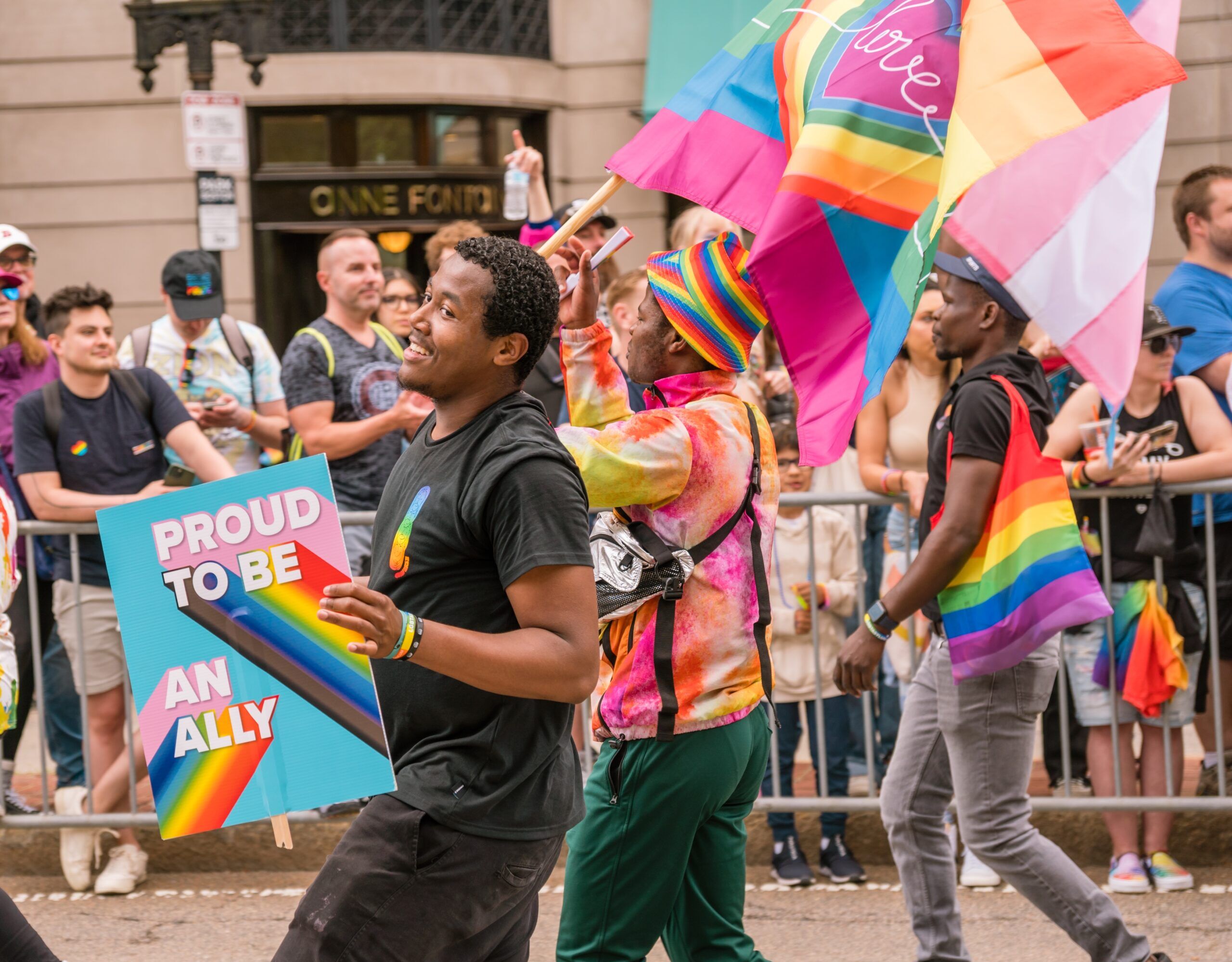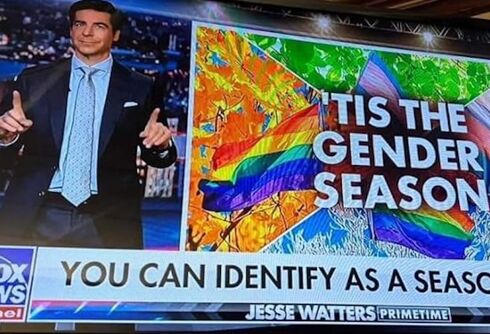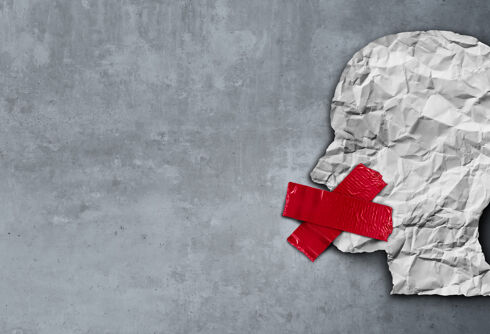The Boston Pride parade is back, and there was no better reminder of it than the familiar roaring and thunderous sounds from the Moving Violations women’s motorcycle club to kick it off. The day reminded many, after a four-year hiatus, of the good feelings of seeing the entire community enjoying themselves.
“I was happy to see so many seniors and young people celebrating Pride together!” Mary Leno, an active senior resident of Cambridge’s LGBTQ community, told me.
Related:
Pride will only be truly inclusive when it is accessible to disabled LGBTQ+ people
If Pride continues to exclude people, liberation and justice will only be delayed.
Gov. Maura Healey (D), Massachusetts’ first openly lesbian governor, hugged and high-fived spectators along the parade route. Everywhere Healy has gone these days, she has invited people to come to Massachusetts.
Dive deeper every day
Join our newsletter for thought-provoking commentary that goes beyond the surface of LGBTQ+ issues
“I’m just so proud to be a part of it. I’m proud to lead this state. I’m grateful for the support,” Healey told reporters at Pride. “And I just want people to know, in this time where there are other states going backward — come to Massachusetts. It’s a great place to live, raise a family, and grow a business.”
The Boston Pride parade returns at a time when LGBTQ+ Americans are witnessing a backlash against our civil rights. At least 650+ anti-LGBTQ+ bills have been introduced in Congress, with over 400 targeting our trans population, banning them from sports, gender-affirming healthcare, and even onstage “drag” performances in some states. In response, the Human Rights Campaign has declared a state of emergency for LGBTQ+ Americans.
“I live in Des Moines, Iowa, and we have a very big gay community there,” Shelia Maddock told me; her sister, Carrol Maddock from Brighton, England, visited Boston for the weekend. “Des Moines is very liberal, but our current governor, Kim Reynolds, is atrocious. She has introduced a terrible amount of legislation, so it is nice to be in something positive here like Boston Pride.”
The Boston Pride parade returned after the COVID-19 pandemic and the disbanding of the Boston Pride Committee’s board of directors in 2021. In 2020, the police murder of George Floyd and the resulting mass racial justice protests across the country proved an inflection point for LGBTQ+ people of color in Boston concerning the police— it raised additional fear.
In 2021, Boston Pride’s board refused to publicly support a position statement on policing authored by the LGBTQ+ community of color. Their refusal simply highlighted the decades-long racial strife over the board, including feelings that the board remained too corporate and treated marginalized groups as nonessentials — except for in photo-ops highlighting diversity.
Boston Pride For The People (BP4TP) has shown how to unite the community. When Boston Pride was dismantled, a coalition of LGBTQ+ community activists and groups reimagined BP4TP as a model organization where long-ignored marginalized groups — especially communities of queer and trans, Black, indigenous, and people of color communities (QTBIPOC) — became essential actors in its new chapter.
Last June, Pop-Up Pride laid a solid foundation for today’s BP4TP: serving greater Boston with a rally of diverse community speakers, local artists, musicians, performers, community tables, food vendors, a family area, an LGBTQ+ youth area, and support from nonprofits.
“We had to be the ones to create something for our city where we all could feel included, respected, and accepted,” Adrianna Boulin, president of Boston Pride for the People, told Boston Public Radio.
BP4TP spent a year planning with a varied spectrum of intersectional diversity within our LGBTQ+ communities to create an inclusive Pride event. With the recent backlash against our communities, we are witnessing a deliberate campaign to expunge LGBTQ+ people out of public life, with the censoring of discussions about LGBTQ+ people in schools and the banning of books -by and about us. These attacks are why coming together as a community is imperative, now more than ever.
The new Boston Pride parade symbolizes hope for us to become a community again.
“What a joyful crowd! Pride has been revived!” my friend, Estelle Disch, texted me.
I was overjoyed seeing the return of the amphibious Boston Duck Tours vehicles strolling down the parade route, marchers being cheered, bands playing, rainbow Mardi Gras beaded necklaces thrown to onlookers, drag queen divas strutting and striking poses, and also participants who memorialized murdered transgender people — some participants carrying photos of them and others holding placards that said, “We remember.”
I watched the parade standing on a park bench facing Boylston Street in the Boston Garden, where I met the Maddock sisters. Carrol shared what the parade meant to her.
“I live in Brighton, England, and it is amazing to be here in Boston for Pride in what turns out to be an amazing day after a four-year hiatus. I can’t believe it and cannot wait to text all my friends to say, ‘Can you believe I am here on Pride Day in Boston?'” she excitedly said.
I couldn’t believe it either.
















Boston’s radically-inclusive “Pride for the People” parade is re-uniting the community